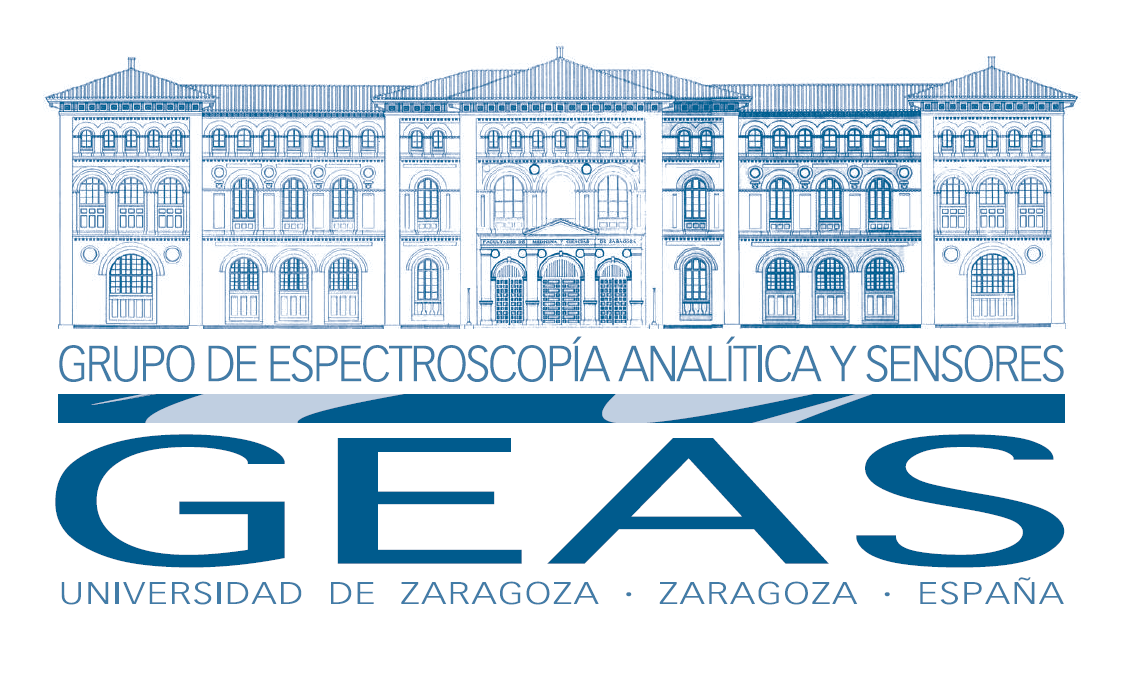
GEAS Research Lines
Our lines of research
,The research lines of the GEAS group correspond to the following three lines of work:
I. Analytical Nanometrology.
The research, development and application of new techniques, methods and analytical platforms for the detection, characterization, and quantification of both synthetic and natural nanomaterials in consumer products, the environment and biological systems, and individual particle and cell detection techniques.
II. (Bio) Electrochemical and optical analytical sensors.
The design, development, and application of catalytic (enzymes) and affinity (antibodies, aptamers) (bio)sensors for the determination in situ of contaminants, clinical parameters, and other parameters of interest in the field of environment, food safety, and biochemistry clinics.
III. Characterization of heritage materials.
Non-destructive instrumental techniques for the best knowledge and preservation of the artistic and historical heritage, with special emphasis on the study of ceramics, pigments and organic wastes.
GEAS
Analytical Nanometrology
Research and Development of new analytical techniques and methodologies for the characterization of artificial nanomaterials and nanoparticles in consumer products and strategic materials. Characterization of nanoparticles of Ag, Au, Co, Fe, SiO2, CeO2, metal oxides, etc.
Nanotechnology and analytical environmental nanoscience.
Multielemental chemical and functional speciation in natural nanomaterials of importance in ecosystems: NOM, colloids, phytoplankton, biocolloids, … etc. Application of techniques of Single Particle Analysis, Single Cell Analysis, dynamic radiation scattering, hydrodynamic chromatography and ultrafiltration techniques and AFFF (assymetric flow field fraction) for the separation of nanoparticles from Single Particle Analysis and Single Cell Analysis.
GEAS
Analytical spectroscopic and electrochemical sensors
Design and development of new catalytic (enzymatic) and affinity (antibodies, aptamers) biosensors, for the in situ quantification of endogenous clinical parameters, toxic organic molecules, contaminants, and other parameters of interest.
Electrochemical sensors for the detection and quantification of metallic nanoparticles. Electrochemical characterization of modified surfaces. Nanostructured analytical biosensors.
Applications of these (bio) sensors in the field of clinical biochemistry, environment and food safety.
GEAS
Characterization of strategic materials using non-destructive instrumental methods
Application of non-destructive instrumental techniques for the best knowledge of the artistic, monumental and natural heritage. Study of new materials.
Application of scanning electron microscopy (SEM), transmission (TEM) and field emission scanning (FESEM) techniques to the study of biological systems, materials, and nanomaterials of interest
Latest GEAS news
Participation in the exhibition “With the Eyes of Science”
The GEAS researcher Josefina Pérez-Arantegui has contributed two activities to the Exhibition " With the eyes of Science ", from September 24 to September 1 October 2021, included in the events of the Researchers' Night ( European Researchers´ Night ) organized by the...
GEAS participation in the European Researchers’ Night 2021
Last Friday, September 24th, the "European Night of Researchers 2021" took place in various Centers of the University of Zaragoza, in which the GEAS group showed its experiences in the OUTBIOTICS project under the title: "Nanobactericides: our little allies" . The...
Interview on Aragón Radio about the OUTBIOTICS project
The Prof. Francisco Laborda director of the GEAS research group, reports on the Aragón Radio station about the final phase of the OUTBIOTICS Project. In the "Despierta Aragón" program on the Aragón Radio station, Prof. Francisco Laborda, coordinator of the OUTBIOTICS...




